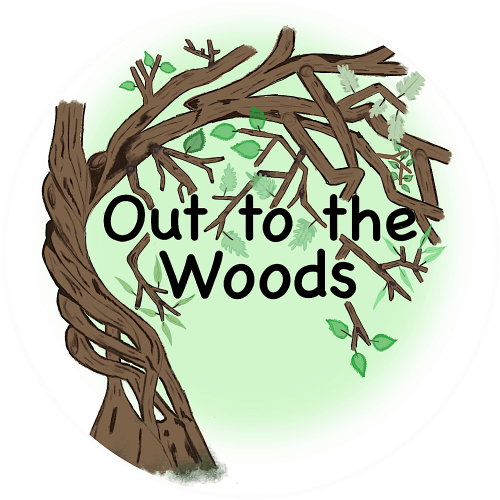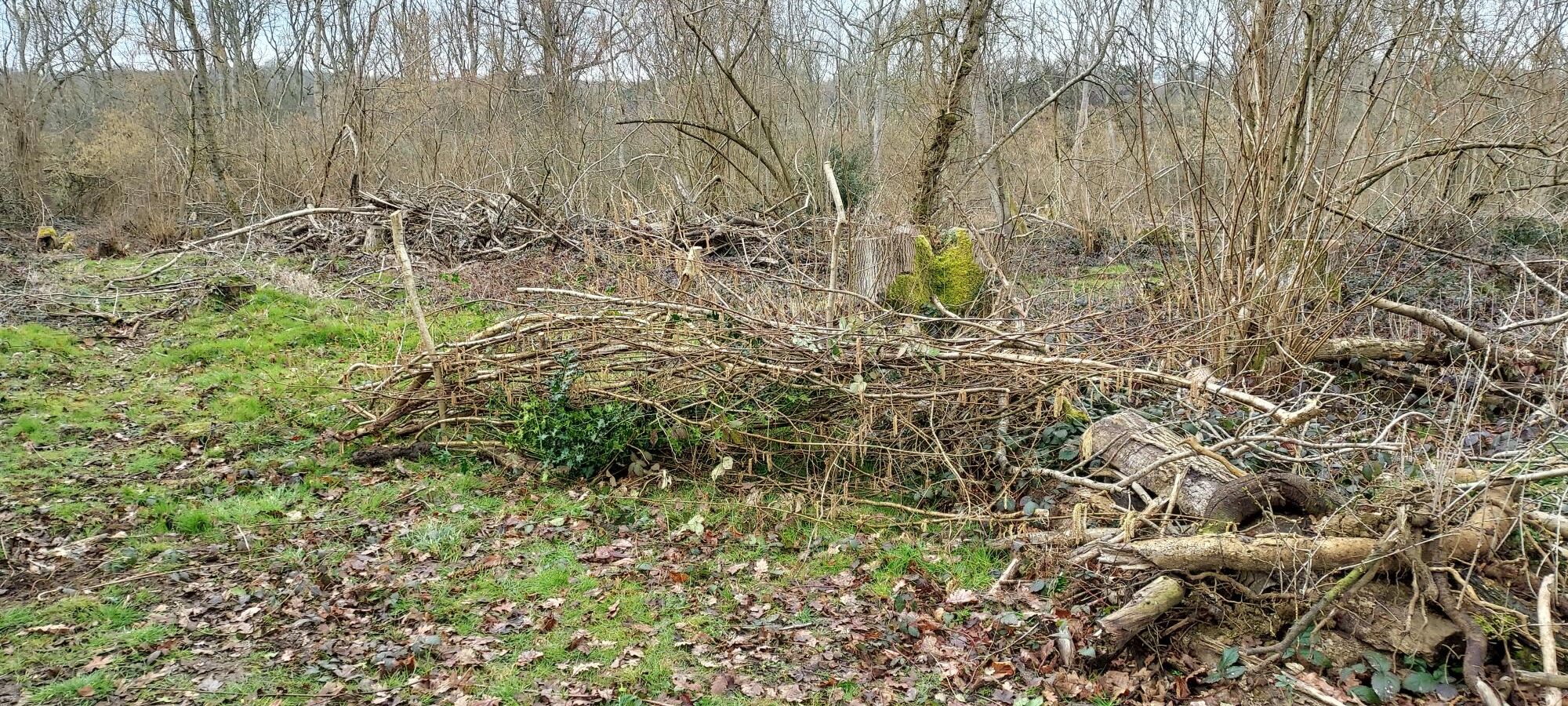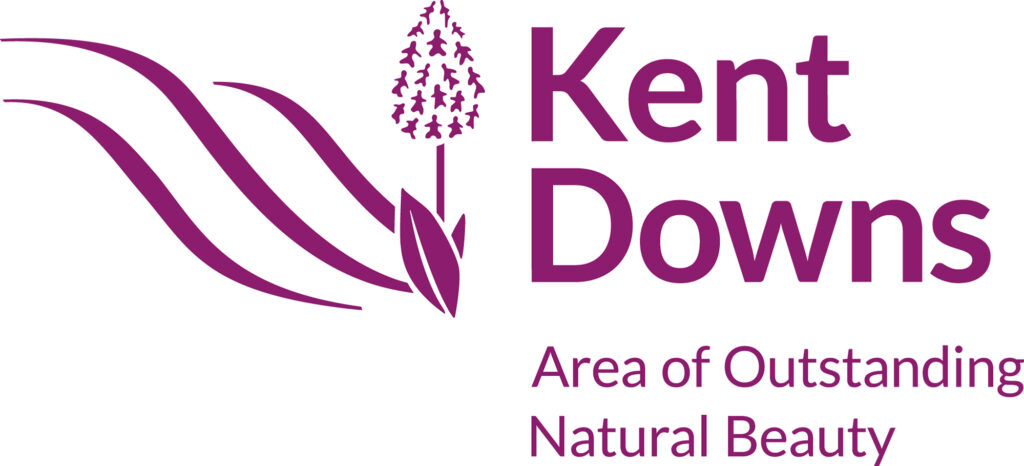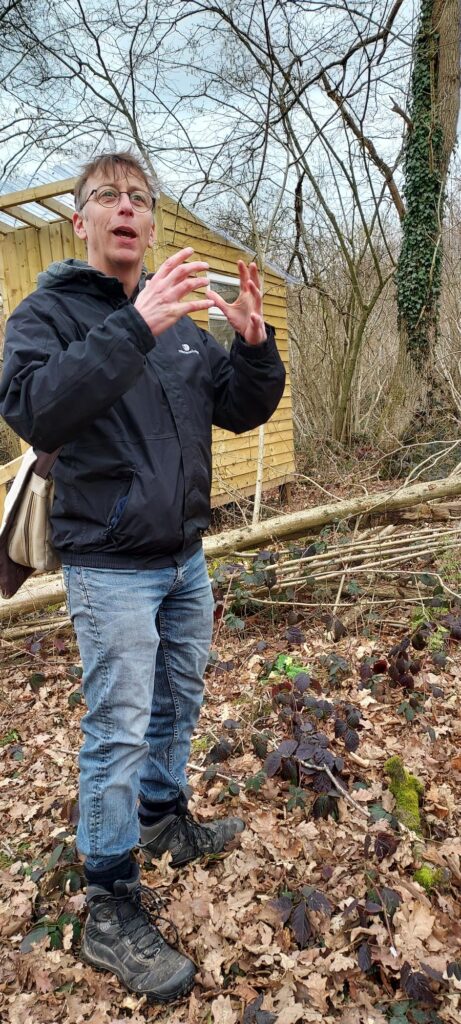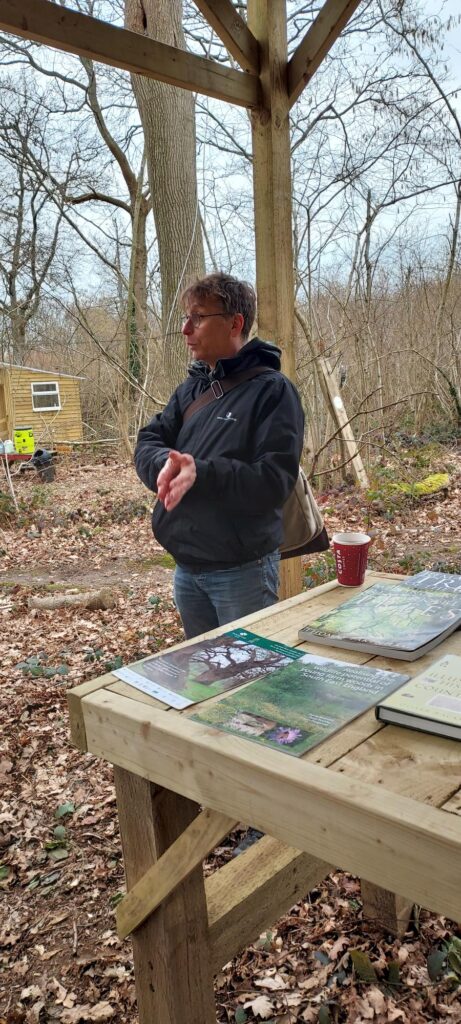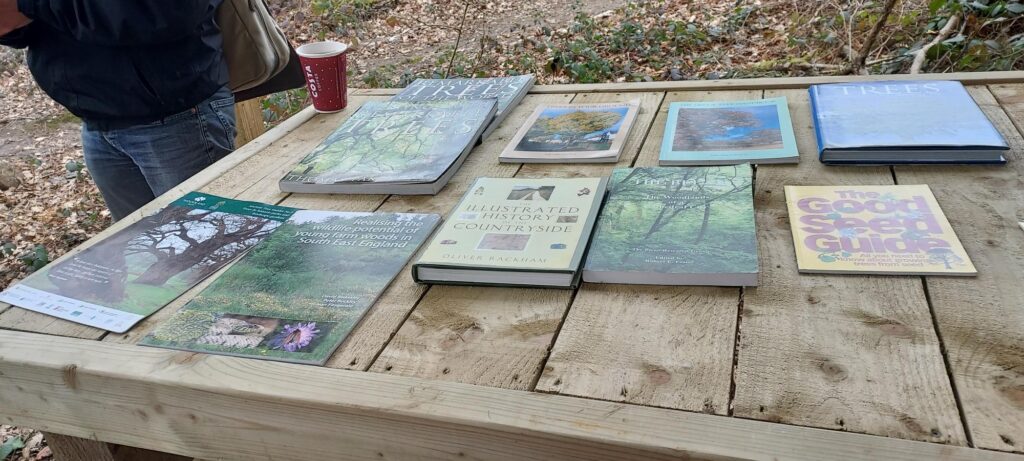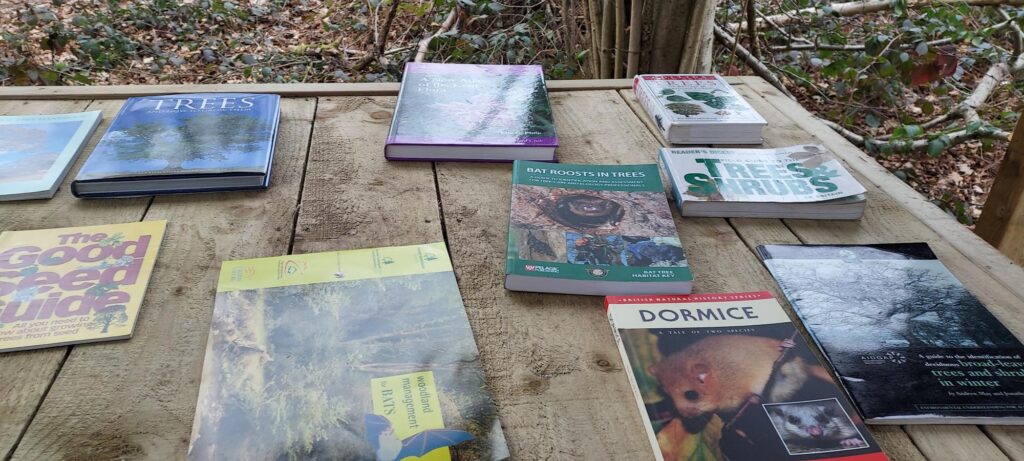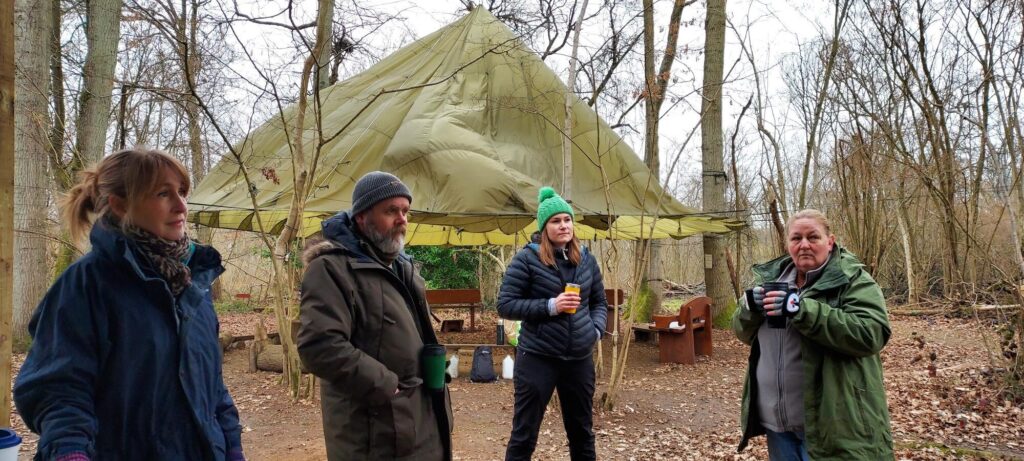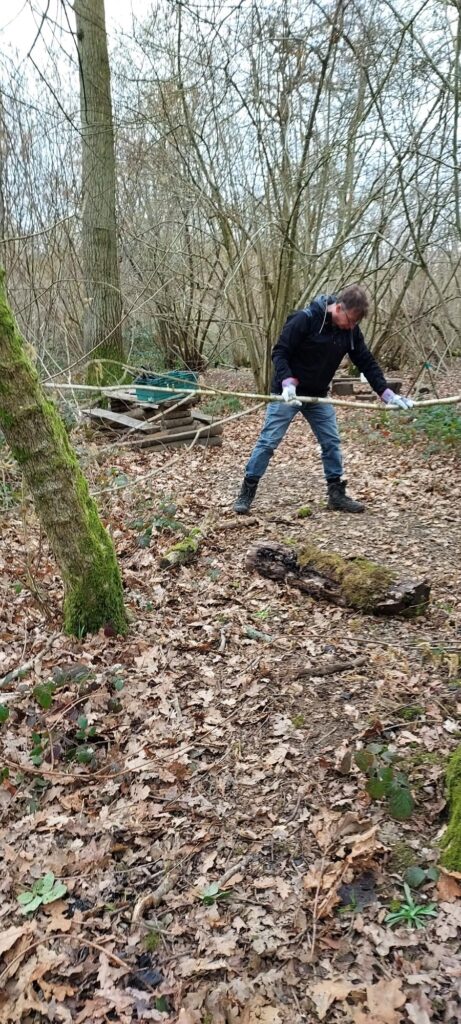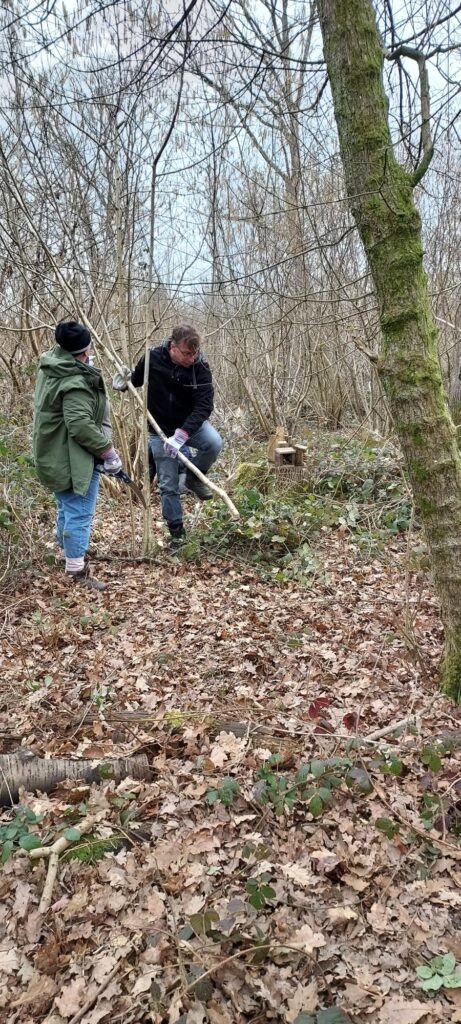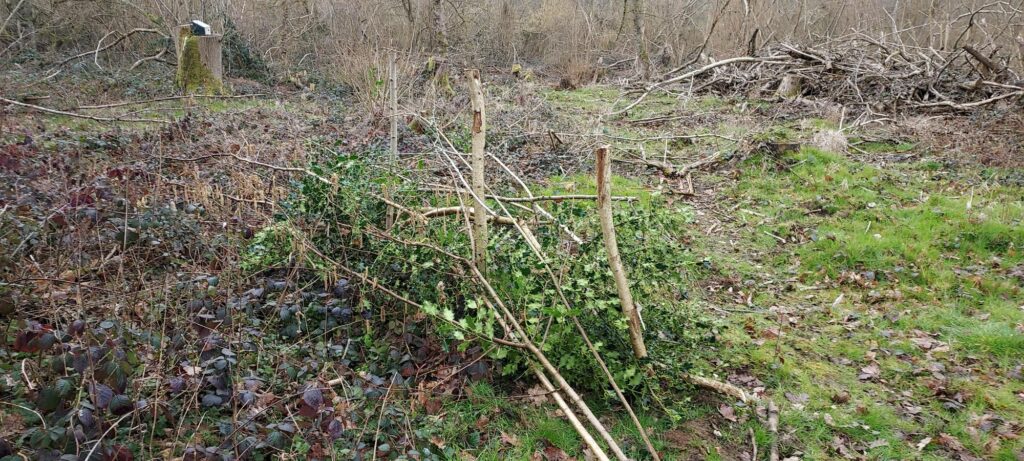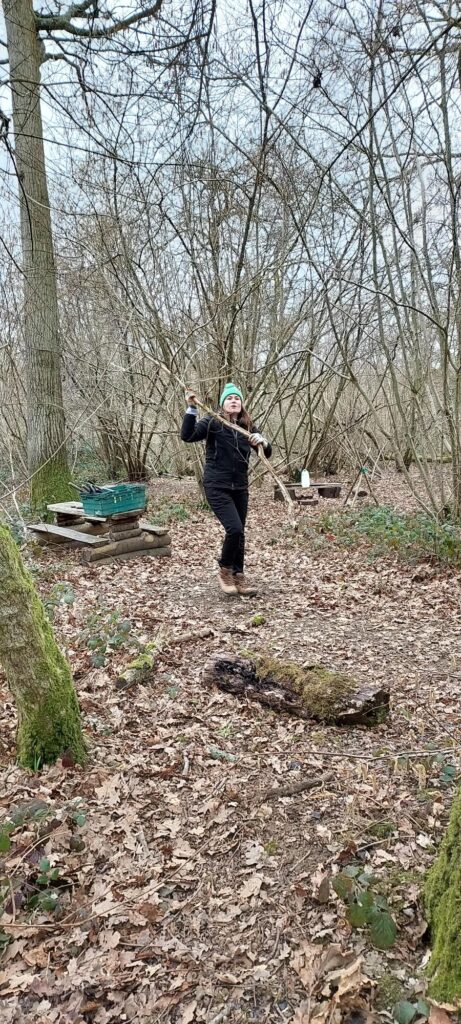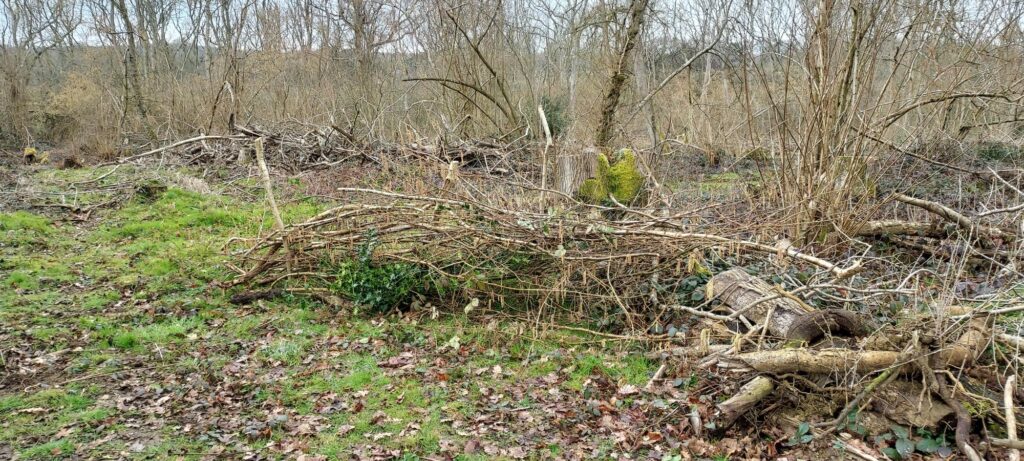Summary
Woodland management course run by Whitehorse Ecology at Out to the Woods CIC
On Sunday 5th March, we spent a fantastic day at Gorham and Admiral Woods with Mike Phillips of Whitehorse Ecology.
Mike led an enjoyable and informative woodland management course at Out to the Woods. Thankfully the weather was in our favour and we learnt all about different management techniques: coppicing, coppice with standards, pollarding as well as the impact that different soil types have on the woodland structure. Mike talked to us about why managing woodlands his essential for biodiversity – the opening up of the tree canopy (through coppicing and pollarding ) to allow ground flora to flourish as well as the vital role that deadwood has to play in providing habitat and food sources. The final part of the session was spent in clearing areas of brambles and coppicing areas to create deadwood and bramble hedges.
Key woodland words
Coppice – trees which are cut back to near ground level every few years and which grow again from the stump or stool. The many straight stems which grow from each stool are used for firewood, tools, and other purposes. The word is also used as a verb, meaning “to cut coppice trees”. This is usually done on a rotation of between 3 and 35.
Coppice rotation – the cycle of cutting back and regrowth in coppiced woodland, usually between 3 and 25 years.
Coppice-with-standards – a two-storey woodland management system where among the coppice (or “underwood”) some trees are left to grow on as larger size timber (“standards”)
Pollard – tree which is cut at eight to twelve feet above ground level and allowed to grow again from the stump to produce successive crops of wood.
Deadwood – All types of wood that are dead including whole or wind-snapped standing trees, fallen branch wood and stumps, decaying wood habitats on living trees such as rot holes, dead limbs, decay columns in trunks and limbs, and wood below the ground as roots or stumps.
Tree identification
Mike will be running a tree and plant identification session on 24th June do get in touch if you are interested in attending
